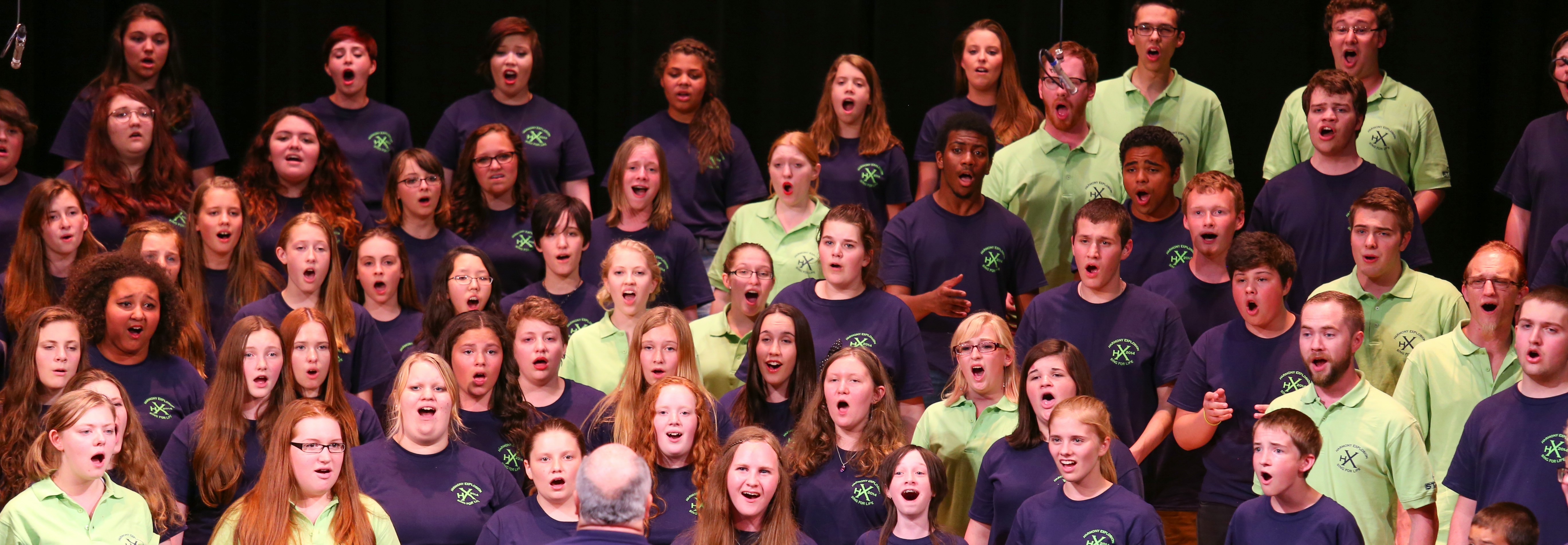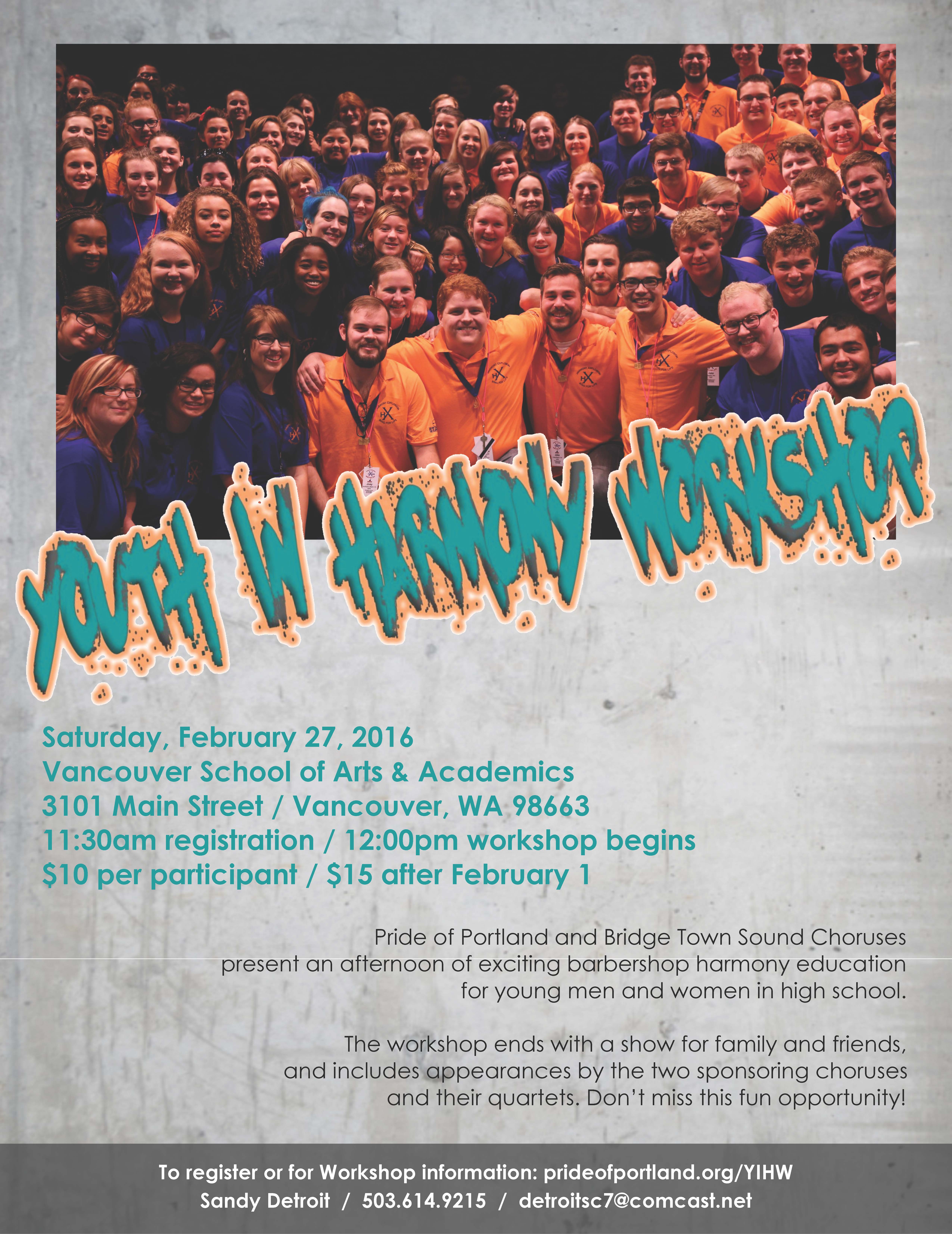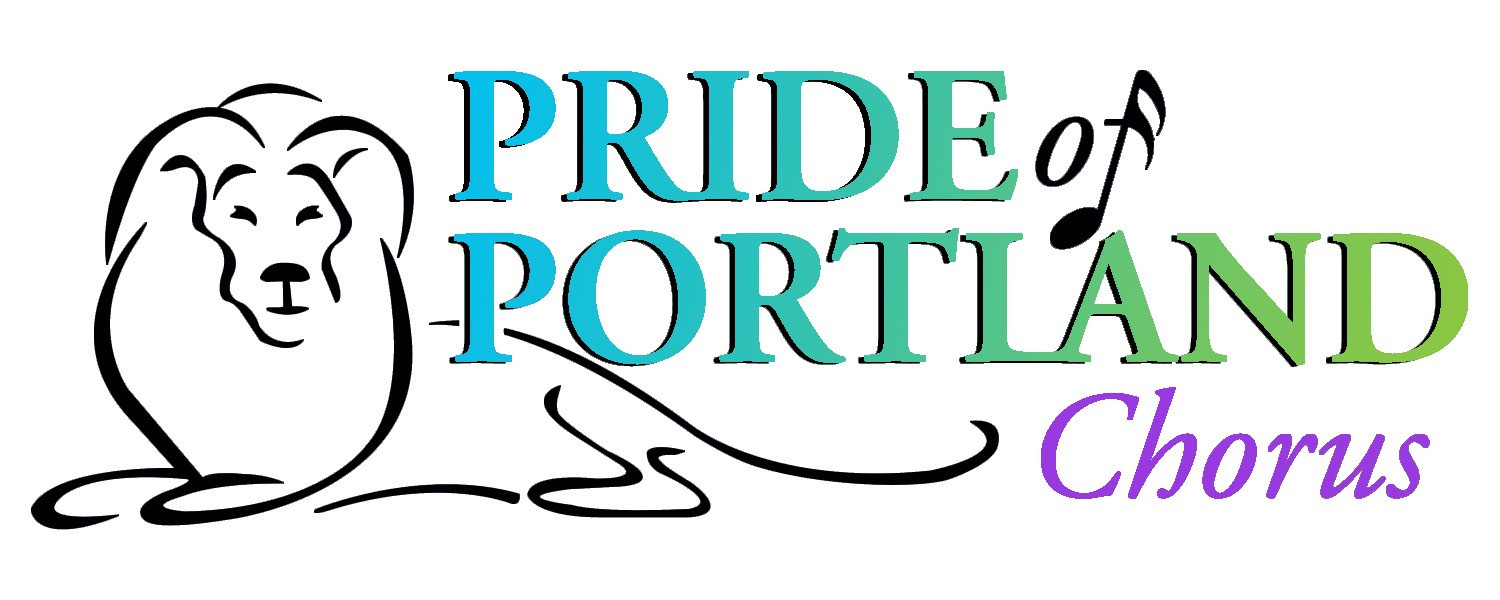Youth in Harmony Workshop


Explore the excitement and joy of a cappella singing! Pride of Portland and Bridge Town Sound Choruses are excited to offer a special event for young men and women of high school age. Our one-day festival will focus on the exciting elements of modern barbershop, four-part a cappella harmony.
Participants will learn two fun songs...with choreography...under the guidance of skilled musical and visual leaders. The workshop's grand finale will be a performance that night by the students, along with special appearances by both Pride of Portland and Bridge Town Sound Choruses, plus several chapter quartets.
The cost is minimal: $10 per participant, which includes all music, learning tracks, t-shirt, and dinner before the evening show, which is open to the family and friends and will begin at 7:00 pm (doors open at 6:30 pm; $5 donation).
• Date: Saturday, February 27, 2016
• Time: 11:30am registration starts / 12:00pm workshop begins
• Location: Vancouver School of the Arts and Academics, 3101 Main St. in Vancouver, WA
• Cost: $10 per participant / $15 after February 1
To register
Please print and return one of the forms below.
• Music educators packet, which includes introductory letter, timeline, student and school registration forms
• Individual student registration: PDF / DOC
• Share our flyer with your friends, too!
We will be learning two songs this year. Please download the sheet music and the learning tracks for your voice part below. Don't know what voice part to choose? Read the tips in the sidebar!
Remember, you are expected to know the music when you get to the workshop! No music should be held on the risers, so use those learning tracks!
Workshop Music
How to read your music!
Barbershop sheet music has a bass and treble clef, just like regular choral music. Each part takes a different line of of the music. However, there ARE a few differences, so check out below.
• Tenors read the treble clef using the notes that have stems going up, usually the top note, but not always. (Sometimes the tenors and leads swap positions!) In men's music, the treble clef is sung an octave lower; women sing it as written.
• Leads read the treble clef using the notes that have the stems going down, usually the bottom note, but not always. In men's music, the treble clef is sung an octave lower; women sing it as written.
• Baritones read the bass clef using the notes that have stems going up. For women's music, the bass clef is sung an octave higher; men sing it as written.
• Basses read the bass clef using the notes that have stems going down. For women's music, the bass clef is sung an octave higher; men sing it as written.
Music and Learning Tracks
WOMEN: We Go Together
• Sheet music
• 4-part mix
• Tenor
• Lead
• Baritone
• Bass
WOMEN: What a Wonderful World
• Sheet music
• 4-part mix
• Tenor: part alone / part predominant / part missing
• Lead: part alone / part predominant / part missing
• Bari: part alone / part predominant / part missing
• Bass: part alone / part predominant / part missing
MEN: Row, Row, Row
• Sheet music
• 4-part mix
• Tenor
• Lead
• Baritone
• Bass
MEN: Silhouettes
• Sheet music
• 4-part mix
• Tenor
• Lead
• Baritone
• Bass

